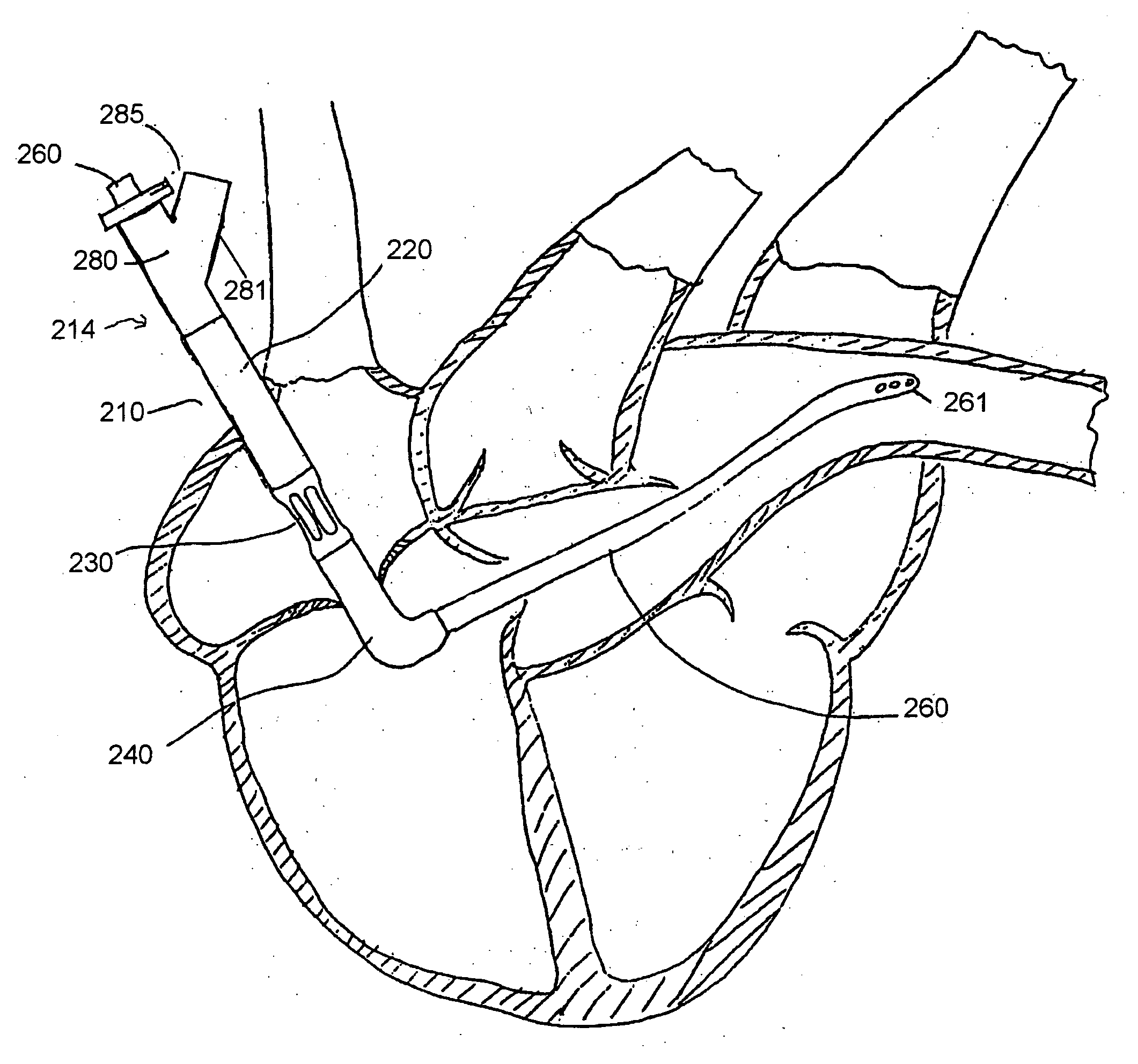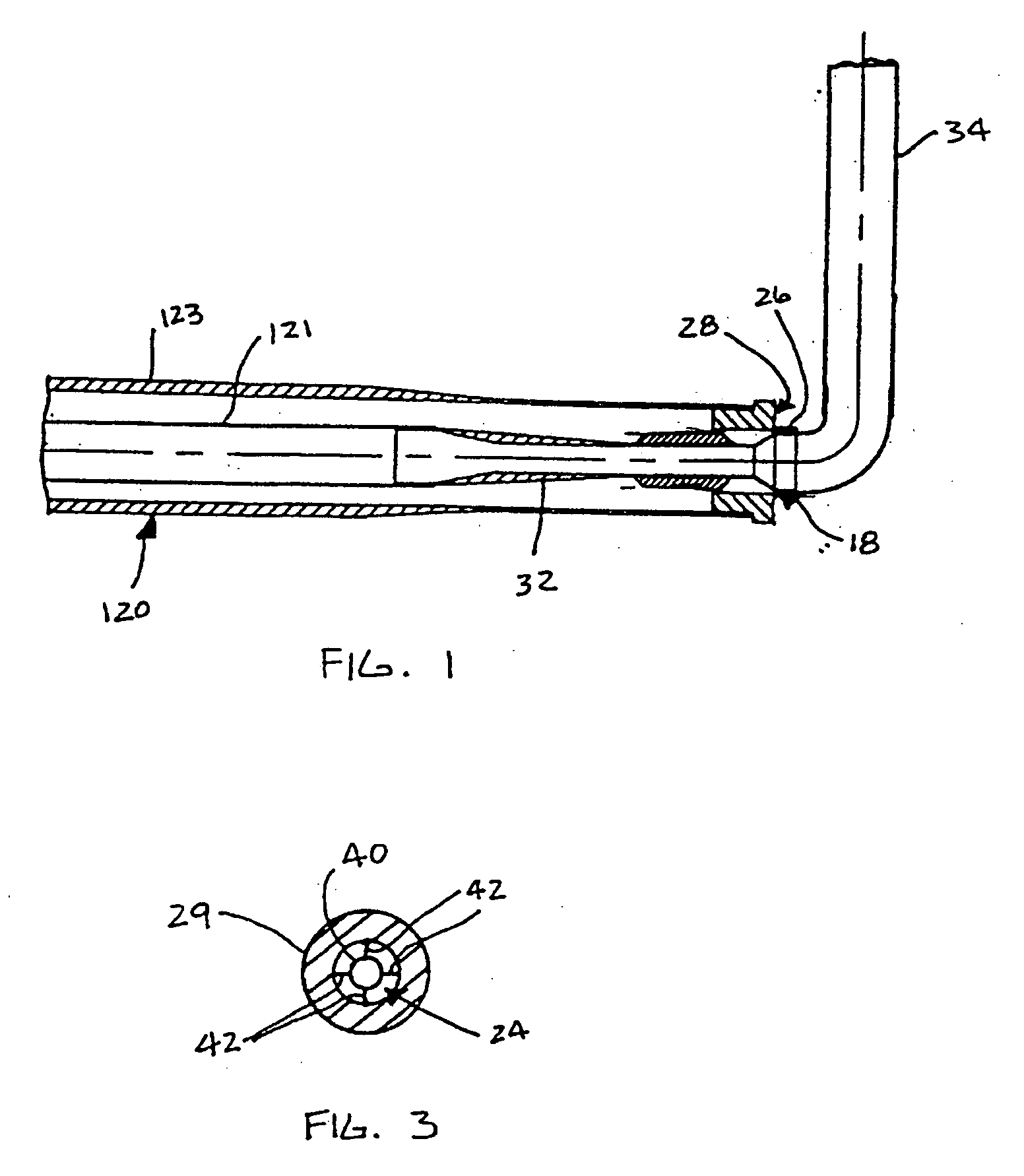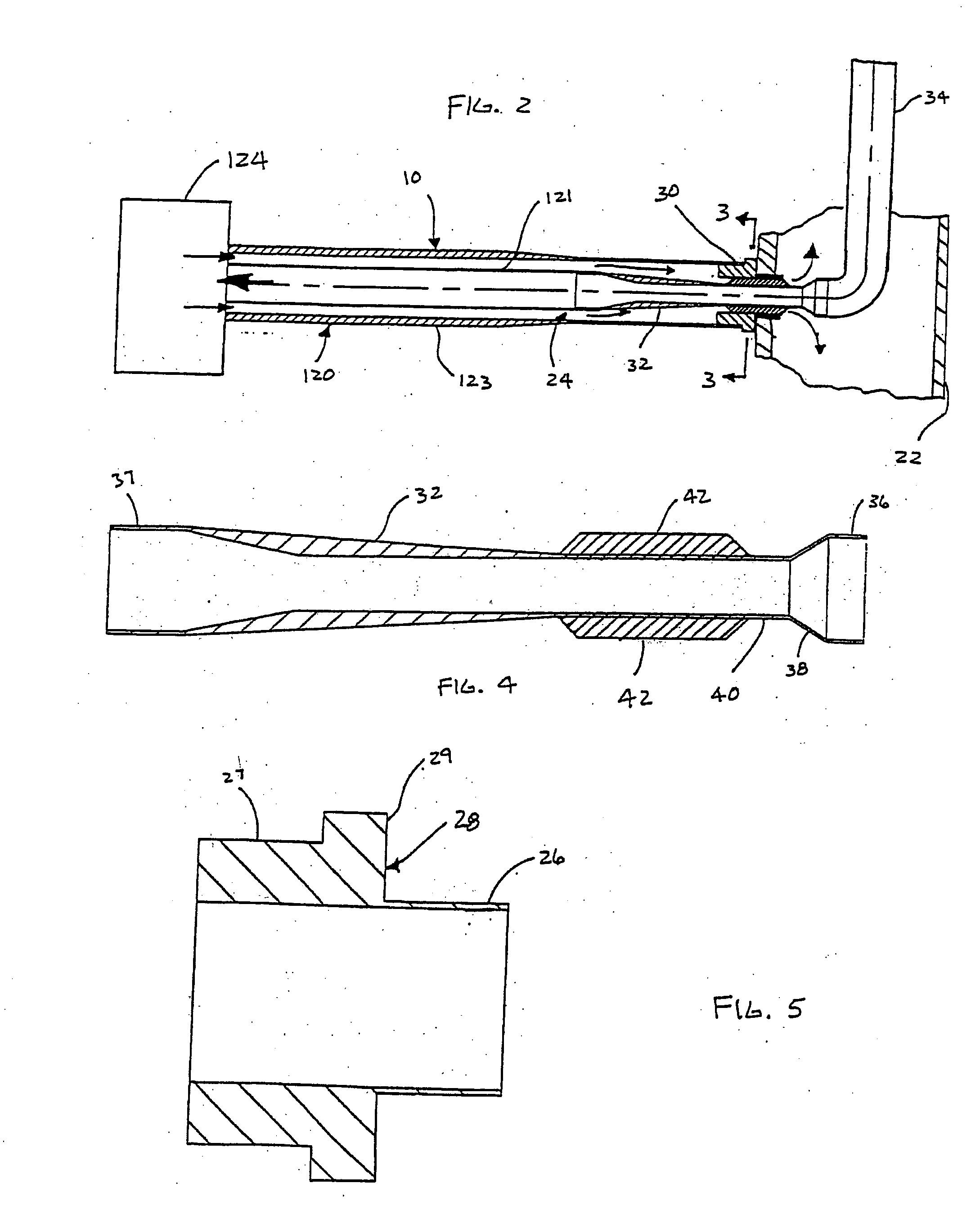Apparatus and methods for entering cavities of the body
a technology of apparatus and cavity, applied in the field of apparatus systems, equipment and methods for entering cavity of the body, can solve the problems of morbidity and disability, high traumatic cabg of coronary artery bypass grafting, and typically requiring significant hospitalization and recuperation time for open heart surgery
- Summary
- Abstract
- Description
- Claims
- Application Information
AI Technical Summary
Benefits of technology
Problems solved by technology
Method used
Image
Examples
first embodiment
[0045] In the present invention, a cannula system 120 (FIG. 1) utilizes a concentric double-wall cannula having an outer cannula 123 forming an annular space 24 around a portion of an inner cannula 121. The cannula system 120 can be a conduit for naturally flowing fluid, pressurized fluid, or can be connected to a miniaturized reverse flow pump 124 shown diagrammatically in FIG. 2. The concentric double cannula system 120 is inserted into a body cavity 22, such as in the wall of the aorta, abdomen, or any body cavity through a single incision such that the inner cannula 121 provides intake for the fluid entering the reverse flow pump 124 and the outflow of the reverse flow pump feeds into the outer cannula 123, or vice versa.
[0046] Referring to FIG. 1, before the double cannula system 120 with flexible inlet conduit 34 attached thereto is inserted through the incision in the body cavity 22, the inner cannula 121 is moved proximally within the outer cannula 123 so that a seal exists ...
seventh embodiment
[0051] The seventh embodiment shown in FIGS. 13-15 has two outer cannulas 62 and 64. The outermost cannula 64 slides over the cannula 62 with the opening, 66 in cannula 62 initially being offset from opening 68 in cannula 64 as shown in FIGS. 14 and 15. The outermost cannula 64 and cannula 62 are slid over the inner cannula 121 until coming in contact with the outer diameter of the inner cannula as shown in FIG. 15 to form a seal therebetween. The cannula system 70 is inserted into a body cavity with the two openings 66 and 68 misaligned. The outermost cannula 64 is rotated with respect to the cannula 62 to align the openings 66 and 68 to allow fluid to flow therein or out therefrom.
[0052] In a preferred embodiment of the present invention, the longer inner cannula 121 is extended through the aortic valve (not shown) into the left ventricle (not shown) by way of the adapter portion 32 and flexible inlet conduit 34. Insertion of conduit 34 into the left ventricle may be accomplished ...
PUM
 Login to View More
Login to View More Abstract
Description
Claims
Application Information
 Login to View More
Login to View More - R&D
- Intellectual Property
- Life Sciences
- Materials
- Tech Scout
- Unparalleled Data Quality
- Higher Quality Content
- 60% Fewer Hallucinations
Browse by: Latest US Patents, China's latest patents, Technical Efficacy Thesaurus, Application Domain, Technology Topic, Popular Technical Reports.
© 2025 PatSnap. All rights reserved.Legal|Privacy policy|Modern Slavery Act Transparency Statement|Sitemap|About US| Contact US: help@patsnap.com



